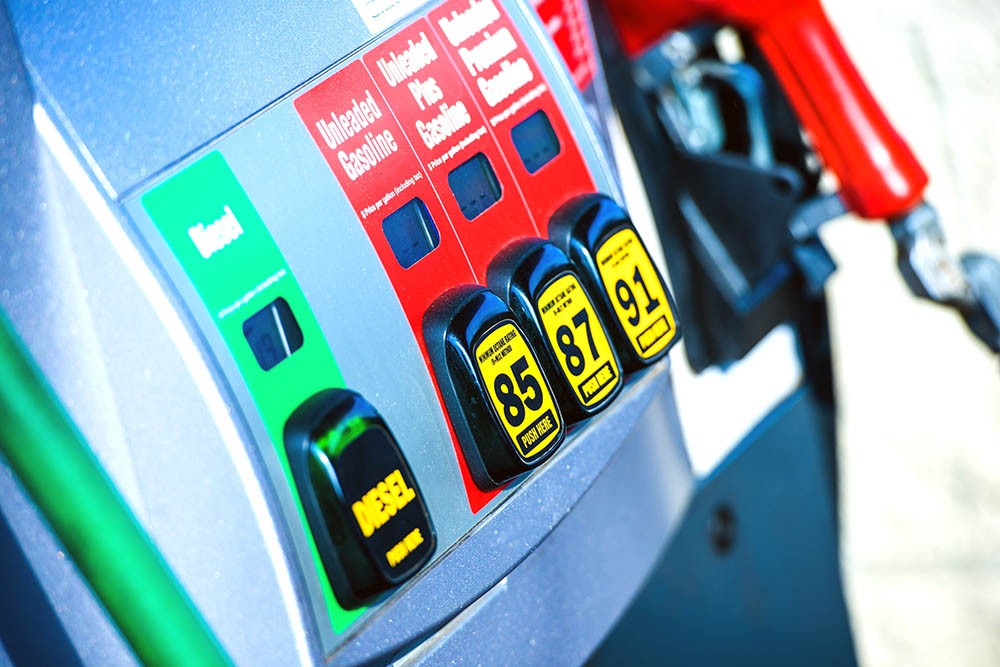Simple Ways To Go Further On A Tank Of Gas

There’s no getting around physics and routine maintenance if you want to pocket some fuel savings this summer.
“Well-maintained vehicles are not as likely to experience a loss in fuel economy as they age,” said Stacy Davis of the Transportation Analytics & Decision Sciences Group at Oak Ridge National Laboratory. “With the average age of vehicles on the road continuing to rise, maintenance is key to vehicle longevity.”
Maximize Fuel Efficiency
Anything that impedes travel also negatively affects fuel efficiency.
“Under-inflated tires can lower gas mileage by about 0.2% for every 1 psi drop in the average pressure of all tires,” said Davis, who also is project lead for FuelEconomy.gov. “Properly inflated tires are safer and last longer.”
That also goes for items strapped to your roof, how often you brake and the maintenance of your vehicle.
“Avoid rooftop cargo boxes, if possible,” Davis said. “A tray that mounts behind the vehicle is much more efficient.”
Drivers also should remove excess weight from their vehicles, like gear stored in the cabin or trunk, and avoid excessive idling,” Davis said.
Other suggestions seem obvious but are easy to forget in the rush to get from Point A to Point B– like avoiding sudden stops.
“Anecdotally speaking, anything that increases rolling resistance or extra tire wear can negatively impact fuel economy.”
Also, quick acceleration from a traffic light wastes more fuel than gentle acceleration. Other factors that decrease fuel economy include frequent braking, low tire inflation or bald tires that don’t roll properly.
Be mindful of these key items to improve fuel effenciency:
- Maintain vehicle recommended tire pressure
- Trade carrying cargo on roofrack (unless it's a streamlined, bullet-style carrier box) for a behind the vehicle hitch-tray
- Eliminate uneccessary weight in vehicle -- don't carry around excess gear
- Avoid quick accelleration and excessive idling
Most of the ORNL research has confirmed long-held suspicions about towing trailers or boats, carrying rooftop items, speeding and driving on underinflated tires. Researchers have used a variety of configurations on a sports utility vehicle and sedan.
Speed and Fuel Ecomony
Passenger vehicles are not engineered with the kind of aerodynamics expected of vehicles in the Indianapolis 500. Rather, they are designed to provide comfort as well as economy for city and freeway driving.
Even race car designers are aware of the “NASCAR Effect.” Stock cars traveling at speeds more than 200 get exceeding low mileage.
The heavier your vehicle, the lower the fuel economy. And the faster you drive with a heavily laden vehicle, miles per gallon decreases rapidly.
As an example, SUV drivers pulling a trailer at 80 MPH can expect up to lower fuel economy by as much as 50 percent.
Your engine works harder as you drive faster–increased air resistance drops fuel economy.
ORNL researchers previously tested vehicles with different configurations such as underinflated tires, open windows, and rooftop and hitch-mounted cargo. They also conducted tests at a variety of speeds.
Here are some of ORNL research and recommendations for improving mileage on your next family road trip:
- Routine maintenance can help improve engine efficiency and, therefore, also improve gas mileage.
- Bald tires increase road resistance and lower gas mileage.
- Towing a 3,500-pound enclosed cargo trailer resulted in fuel economy penalties ranging from 30 percent in city driving to 50 percent at 80 mph for the test SUV.
- Driving with all four windows down decreases fuel economy by as much as 8.5 percent (depending on vehicle type and engine size).
- The best fuel economies were achieved at a constant speed of 40 mph for the test sedan with 57.5 mpg and 50 mph for the test SUV with 29.5 mpg. At 80 mph, fuel economy for the test sedan dropped to 30.9 mpg while the test SUV dropped to 17.7 mpg.
- Low tire pressure (50 and 75 percent of the manufacturer recommendation) can reduce fuel economy by up to 10 percent.
- Hybrid vehicles speeding down the freeway operate on their gas engines and not battery energy. As a result, fuel economy rules apply the same as for traditional gasoline-powered vehicles.
- Boxes and suitcases strapped to top of a vehicle increase wind resistance. Consider using an aerodynamic cargo carrier if you need to carry cargo on the roof.
- Hitch-mounted carriers tend to offer less wind resistance than roof rack cargo since air flows unimpeded over the roof of the vehicle.
- There’s no way to improve your fuel economy by going faster.
“In short, we recommend drivers avoid aggressive driving and speeding on the highway,” Davis said. “These are two of the biggest factors leading to lower fuel economy.”